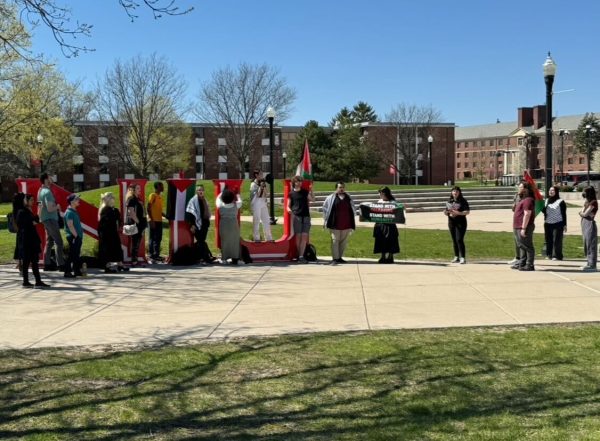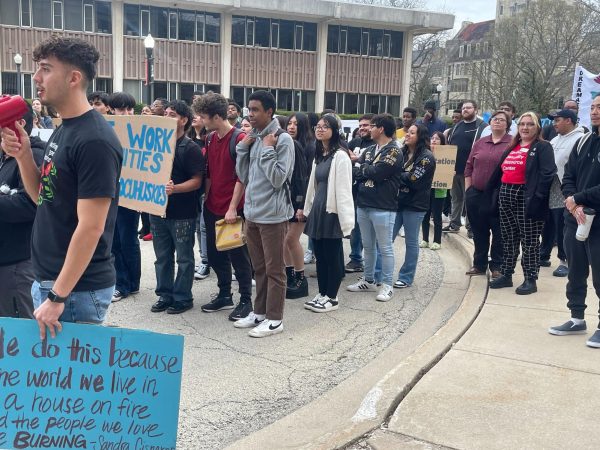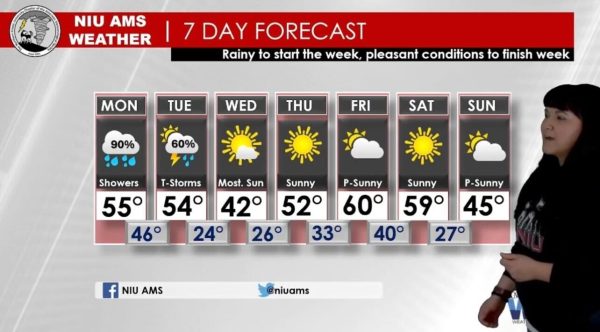NIU Latino graduation rate at 41 percent
February 12, 2018
DeKALB — A growing Latino population has led to an increase in college enrollment rates, raising the question of a gap between college completion rates among white and Latino students.
The Education Trust, a non-profit organization that promotes equal education opportunities for students of color and low-income families, raised that question in its Dec. 14 study, A Look at Latino Student Success: Identifying Top- and Bottom-Performing Institutions. The organization does research to better understand trends in the education system and works to increase students’ access to college, as well as completion.
Andrew Nichols, a researcher involved with the study, said the report explores the issues of bridging the gap between Latino student graduation rates and white student graduation rates.
Nichols’ report is the third Education Trust has done; the previous two looked into low-income students and black students.
“The importance of a bachelor’s degree cannot be understated, and what we know looking at the national data are that the graduation rates for Latino and black students tend to lag behind those of white students,” Nichols said.
The 613 universities included in the report were grouped together by similar characteristics, like overall population sizes and demographics. Once the institutions were grouped, an average of different variations of graduation rates was determined for each school.
“You kind of compare colleges that really stack up nicely against each other. You actually see that the graduation rates at those institutions vary significantly,” Nichols said.
University of Illinois Urbana-Champaign, the public school with the highest graduation rates in the state of Illinois, had a 5 percent difference between its 82 percent Latino and 87 percent whites graduation rates.
“One thing that you have to keep in mind is that we are only the 18 percent of the student population,” said Luis Santos-Rivas, Latino Resource Center director.
An institution must have at least a 25 percent Latino population to be considered Hispanic-serving, Santos-Rivas said. NIU’s current Latino population is 16.9 percent, according to the NIU Fast Facts webpage. Santos-Rivas said with NIU tuition for out-of-state and in-state students becoming equal, the university may soon classify as Hispanic-serving.
“We guess that in the next five years we’ll become HSI, a Hispanic-serving institution, and that will give us a lot of advantages in the ways that we can apply to federal grants, [financial aid funds] and many other things, so that will increase for sure the Latino graduation rate,” Santos-Rivas said.
Nichols said administrators often excuse poor graduation rates by blaming the students they had to work with.
“The graduation rates aren’t necessarily a byproduct of the students you enroll,” Nichols said. “It’s actually what that college does with and for those students that matters a great deal.”
Santos-Rivas said one of the common things he finds Latino students experiencing is homesickness, and the Latino Resource Center serves as a safe and comfortable place for students. Santos-Rivas also said the center offers free mentoring programs to aid in Latino student retention.
“Another thing that we do is that we have our own Latino graduation. It’s completely different than the regular graduation,” Santos-Rivas said. “We give them a 30-second speech that they can [give] thanks to their loved ones or whatever they want to say.”
Santos-Rivas said the ceremony is very emotional and is followed by a lunch for all students and their families.
The Latino Resource Center is made up of two departments: the Center for Latino and Latin American Studies and the Latino Resource Center.
Latino Leaders Magazine, a magazine that promotes successful Latino leaders, listed NIU on its “Best Colleges for Latinos” for the second year in a row as of Dec. 20 because of the Latino Resource Center and the programs it offers Latino students.
Alejandro Ramirez, graduate assistant for Supporting Opportunities for Latinos, said the organization promotes retention within students, and one of the bigger aspects of the group is working to establish a sense of community among members.
“Once we have that camaraderie and brotherhood, we feel like we can develop more as professionals and leaders because we do host events that support cultural awareness and cultural advocacy,” Ramirez said.
Ramirez first joined the organization as a freshman in 2012 and became the president in 2017. He said being offered the graduate assistant position helped push him to graduate school.
“I guess to myself [the Latino Center] has always been a home and just because I’ve met with this organization here, and I can kinda come here and stay a few hours, and I’ll feel comfortable like as if I was at home,” Ramirez said.
Santa-Rivas said the Latino population is the only growing ethnicity on campus currently, and the Latino Center also acts as an attraction tool to NIU.
“Part of the problem is we don’t educate our students, our young people, around what’s really happening, and that leads to a lot of misunderstandings and stereotypes and assumptions about people or certain groups of people based upon data that you may see on paper, but you don’t take into context the larger social structures that have existed in our history and things of that nature,” Nichols said.












